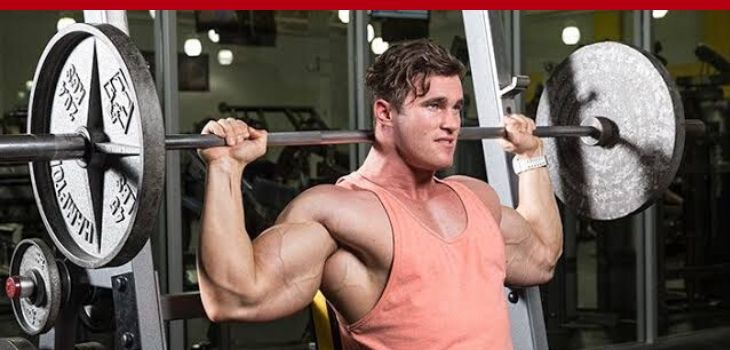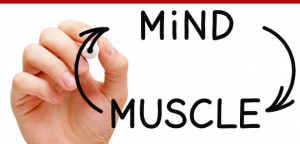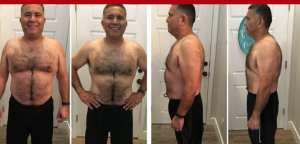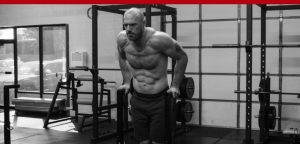Getting results from exercise is more than just selecting good exercises or pushing yourself in the gym. It’s about the picking the best options for your goals, body type and ability to recover.
If every workout were created equal, they would create the same results for every person. But all workouts aren’t created equal and neither are we.
We all have different genetics, body types, stress levels, eating habits, sleep quality and responses to exercise.
While most effective workouts boil down to the same principles, there’s a reason why many of the best bodies in the world used very different strategies to build them.
And if you’d like to here how I teach the principles of exercise, check out my episode on The 7 Most Important Exercise Training Principles For Getting Better Results.
Part of it has to do with understanding the science of building strength and muscle as well as fat loss.
The other part is the art of applying the science and principles to the unique person you have in front of you.
That’s what I’ve specialized in for the past 17 years working with my personal training clients here in Miami Beach.
I had to be an “exercise agnostic” to be successful with my clients. Not all of them wanted to do the big lifts like squats and bench presses—especially the women! And not all of them could even perform all the different exercises correctly so we had to try easier versions. Some clients showed up as complete beasts and I had to work hard to figure out how to challenge them!
Personalizing your workouts to your goals, body type, recovery ability, etc will help you get the best results for all your effort in and outside the gym.
In fact, that’s what I’m helping my CEO Strength Coaching Clients do. We’re only 2 weeks into our first group as I write this and they’re already seeing results!
Check it out: 


However, not everyone gets great results from a general program. One of our members had serious reservations if the workout I gave him was adequate enough:

I reached out to him immediately—I NEVER want a client dissatisfied– and we communicated about what issues he was having with the workout. And as you can read he was unsure why he other guys in the group were being challenged but he wasn’t.
Wes is a young guy and in very good shape so he needed a bit more volume in his workout. After our discussion, I had him make some modifications to his routine to personalize it for his fitness level.
Now check out what he had to say:

Happy clients = Happy coach!
I asked Wes if I could share this story to illustrate the power of personalizing workouts as well as what I’m able to do with my clients from my 17+ years of experience as a personal trainer and writing programs.
However, I know that everyone can’t be part of my fitness coaching program so I wrote this article to help you get better results from all your hard work in the gym by personalizing what your workouts.
Below are 6 ways you can personalize your workouts to help you achieve what most of us are after: a better looking and feeling body!
Like this show? Please leave us a review here — even one sentence helps! Consider including your Instagram handle so we can thank you personally.
1-Choose Your Goal
Most non-athlete people in the gym have either one of these two goals in mind:
- Fat Loss
- Building Muscle
It’s important to understand what category you’re in so that all your decisions for your workout program are congruent with your goal.
For example, if you’re looking to build muscle. But you’re running through a fast-paced, lightweight and low rest circuit training routine then don’t expect much in the way of results.
Conversely, if your goal is to lose fat and you’re on the 5×5 routine (5 sets of 5 reps per an exercise) then don’t expect much fat loss to come from that workout. (I actually had a conversation with a guy who wanted to lose fat and was on the 5×5 routine.)
Make sure you’re crystal clear on your goal and make sure your training routine and nutrition plan are congruent with it!
2-Choose Your Exercise Method
Fat Loss Methods
The most effective fat loss methods I know of our these 4:
- Circuit Training
- Complexes
- Density Training
- HIIT (high-intensity interval training)
These methods work better for fat loss than traditional strength training because of 3 reasons:
- High Intensity
These methods use challenging resistance or lighter resistance moved fast (in the case of HIIT). The higher the load you use, they more metabolically challenging the workout. It’s pretty simple really.
- Use More Muscle
This is another simple idea: the more muscles you work, the more calories you burn. If you’re able to combine a challenging routine that works your upper body, lower body and core, then you’ll be burning much more fat as a result!
- Longer Duration
This should come as a no-brainer but research has consistently shown that the longer you exercise, the greater number of calories you burn. You may have heard of the “afterburn” a.k.a. EPOC (excess post-exercise oxygen consumption.
The afterburn simply means that your workout was so metabolically challenging that your body continues to burn calories even after you stopped exercising.
The fat loss methods I listed above take more time per set than your traditional strength training methods. Hence the greater number of calories burned.
Fat Loss Method Examples
1-Circuit Training
Circuit training is simply going through a group of exercises with minimal or no rest.
That said, there are better ways to do circuits. I personally like to alternate between upper body and lower body or opposite muscle groups when I choose the order of exercises.
Here is a sample body weight circuit routine that you can try out:
- Push ups 12 reps
- TRX Rows 12 reps
- Dumbbell Goblet Squats 12 reps
- V Crunches 12 reps
- Dumbbell Farmer’s Walk 60 second walk
Complete exercises 1-5 with minimal rest then rest 2-3 minutes after. Repeat this 3-5 times.
2-Complexes
Complexes are very similar to circuits except you either focus on the same muscle group (e.g. leg complex) or the same piece of equipment (e.g. dumbbell complex). I’ll give you examples of both.
Sample Leg Complex
- Bodyweight Squats 15 reps
- Alternating Reverse Lunges 15 reps each leg
- Alternating Step Ups 15 reps each leg
Complete exercises 1-3 with minimal rest then rest 2-3 minutes after. Repeat this 3-5 times.
Sample Dumbbell Complex
- Dumbbell Overhead Press 6 reps
- Dumbbell Front Squat 6 reps
- Dumbbell Biceps Curl 6 reps
- Dumbbell Reverse Lunges 6 reps each leg
- Dumbbell Thruster 6 reps
Complete exercises 1-5 with minimal rest then rest 2-3 minutes after. Repeat this 3-5 times. Focus on using the heaviest dumbbell you can while still being able to complete the complex without putting the dumbbells down for rest. If you cannot complete exercises 1-5 without rest, then your dumbbell is too heavy.
Muscle Building Methods
The most effective muscle building methods are these:
- Workout 3-5 times per week (4 days is ideal for most clients I train with this goal)
- Focus on compound exercises
- Use mixed rep ranges
- Long rest intervals with strength exercises (2-3 minutes)
How to do this long-term is a much more in-depth discussion and beyond the scope of this article.
I will, however, give you what I think is a solid strategy to follow.
Workout Split
I said 4 days works really well in my experience for the majority of the clients I’ve trained who wanted to build muscle fast and effectively.
Here’s my go-to workout split:
- Mon – Upper Body
- Tue – Lower Body
- Wed – Rest, 10k steps or aerobic exercise
- Thu – Upper Body
- Fri – Lower Body
- Sat – Rest, 10k steps or aerobic exercise
- Sun – Rest, 10k steps or aerobic exercise
Sample Workout
You now know my favorite body part split for building muscle. Now I’m going to show you a sample upper body and lower body routine that I would do based on the other principles.
Upper Body Workout A
1a. Pull Up – 3x 6 reps
1b. Incline Bench – 3x 6 reps
2a. Seated Row – 3x 12 reps
2b. Flat Dumbbell Chest Press – 3x 12 reps
3a. Push Ups – 2x 15-20 reps
3b. Inverted rows – 2x 15-20 reps
Lower Body Workout B
- Romanian Deadlift – 3x 6 reps
- Machine Hamstring Curl – 3×12 reps
- 3a. Single Leg Dumbbell Deadlift – 2x 15-20 reps
- 3b. Dumbbell Farmer’s Walk – 2x 60-second walk
Upper Body Workout C
1a. Seated Row – 3x 6 reps
1b. Weighted Dips – 3x 6 reps
2a. Lat Pulldown – 3x 12 reps
2b. Flat Dumbbell Chest Press – 3x 12 reps
3a. Push Ups – 2x 15-20 reps
3b. Inverted rows – 2x 15-20 reps
Lower Body Workout D
- Front Squat – 3x 6 reps
- Dumbbell Reverse Lunge – 3×12 reps
3a. Alternating Step Ups – 2x 15-20 reps
3b. Calf Raises – 2x 15-20 reps
Program Notes:
– Check with your doctor before starting any exercise program
– Look up exercises on Youtube if you’re unfamiliar with them
– Rest 2-3 minutes after each set
– Stop if you feel pain or if you’re unsure if you’re performing proper technique
Although this is a pretty decent program (I use more advanced techniques for my CEO Strength Coaching Program), it’s still a general program.
So here’s what is going to happen…
Some of you will follow this workout and will get better results than you’ve ever had before with exercise. Enjoy them!
Eventually, this program will stop working for you and you’ll need to transition to something different. When that time comes, consider signing up to my CEO Strength Online Fitness Coaching Program and I’ll get you the best results you’ve ever had from working out.
Some of you will get crushed by the 4-day program and will walk around with incredible soreness for a week or two before you give up because it’s just too much. That means you weren’t ready for this workout. You should consider signing up for my online coaching program to get you started with something more appropriate to your fitness level.
Some of you will not know how to do some of the exercises correctly. And if you try to do it anyway, you’ll get injured or won’t make progress. Make sure you learn how to do each exercise from a qualified professional or substitute exercises you don’t know with ones you do know how to perform correctly.
Or make the leap and sign up for my fitness coaching program and get the results you deserve from all your efforts in and out of the gym!
3-Strive For Progress
One of the most common mistakes I’ve seen in the gym over the past 17+ years is people who show up doing the same workout routine with the same exercise, same sets and reps scheme and lifting the same weight.
A perfect example of this is one of my personal training client’s girlfriends. While he has lost over 20lbs and done his first pull up and dip EVER working out with me 3 times per week, she works out 6 times per week. But she goes to classes where the workouts are consistent with the intensity that they use. There’s no focus on lifting more weight AT ALL. With those types of exercise classes, it’s all about feeling tired at the end of the session.
But tired doesn’t = progress.
Progress = progress!
It’s a simple idea that can lead to much better results!
Just ask yourself:
- Am I lifting more weight than I did a month ago?
- Am I doing more sets with the same weight?
- Am I doing more reps with the same weight?
- Am I using more resistance on that cardio machine (or incline on a treadmill)?
If the answer is NO, then it’s no wonder that you’ve hit a plateau!
This is a basic principle of exercise physiology called the principle of progressive overload. It’s a basic principle that most people aren’t taking advantage of!
Of course, you can’t always do more and more month after month. But let’s get real. Most people are nowhere near their potential.
So you most likely have YEARS of progress ahead of you IF you do the right routine!
And the right routine will change as you get stronger and in better shape.
That’s why I offer individualized coaching. To help people overcome exercise plateaus and weight training injuries from less-than-ideal workouts.
Most people overestimate their ability to get results in the short term while underestimating their ability in the long-term. This mentality leads to what you see in most gyms. People who are pushing hard month after month but turn to supplements and steroids because their results have hit a plateau. Don’t be one of those guys.
4-Eat For Results
I’m not going to go too in-depth here on nutrition.
What I will say is this: if building muscle is your goal, then you should be in a calorie surplus (eating slightly more calories than you need). If fat loss is your goal, you should be eating slightly less calories than you need.
If you want to read my in-depth article on how to dial in your nutrition, click here.
5-Track Your Progress
Tracking your progress is KEY to making sure you’re on the right track to getting the results you deserve from all your hard work in the gym!
However, many people don’t track their results or even know where to start.
Below is what I do personally to guarantee that my clients and I get results from what we do in and outside the gym.
Training Notebook
One of the most powerful ways to see how well your workout is working for you is to keep a training notebook (I actually use my iPad for this). Whether you’re making continual progress or you have stagnated for several weeks, it’ll show up in your records!
I keep detailed notes about my personal training and online coaching client’s workouts as well as my own. That way, when something isn’t working I see it in the number and I can adjust accordingly!
Scale and Tape Measure
Another easy way to keep track of your progress is to use a scale and a tape measure. Use the scale to measure you weight (duh) and use the tape measure to measure the circumference of your problem area.
For example, I store fat around my abdominal area. If the scale goes up and my abdominal circumference measurement stays the same or gets smaller, then I know I’m on the right track. If the scale goes up and my waistline increases, then I know I better change what I’m doing!
Another example is a client of mine who stopped training with me over 9 months ago (because he got too busy with work and fell off the exercise wagon). I’ve still been training his wife and two kids so I see him every week.
He’s actually lost weight since he stopped training with me. But his belly is BIGGER than ever!
Some people would be happy that they lost weight. But he’s knowledgeable enough to know that he lost it from the wrong places!
Of course, knowing WHAT to do when your workout isn’t working is a whole other discussion. We’ll save that for the next episode!
Recap:
- Choose Your Goal
- Choose Your Exercise Method
- Strive For Progress
- Eat For Results
- Track Your Progress








